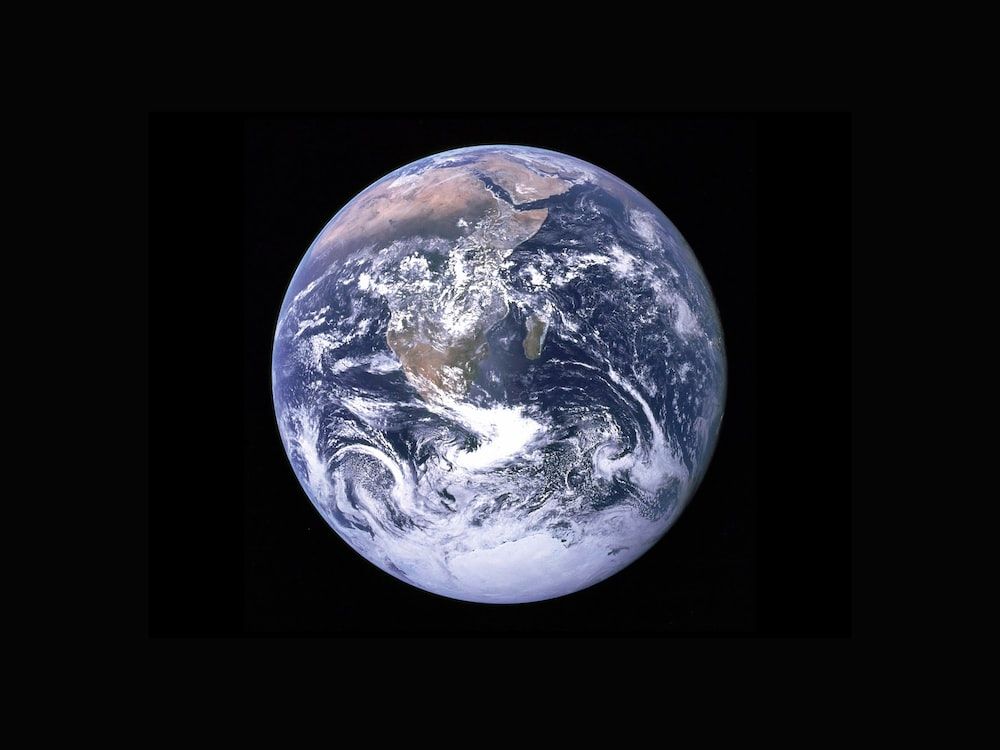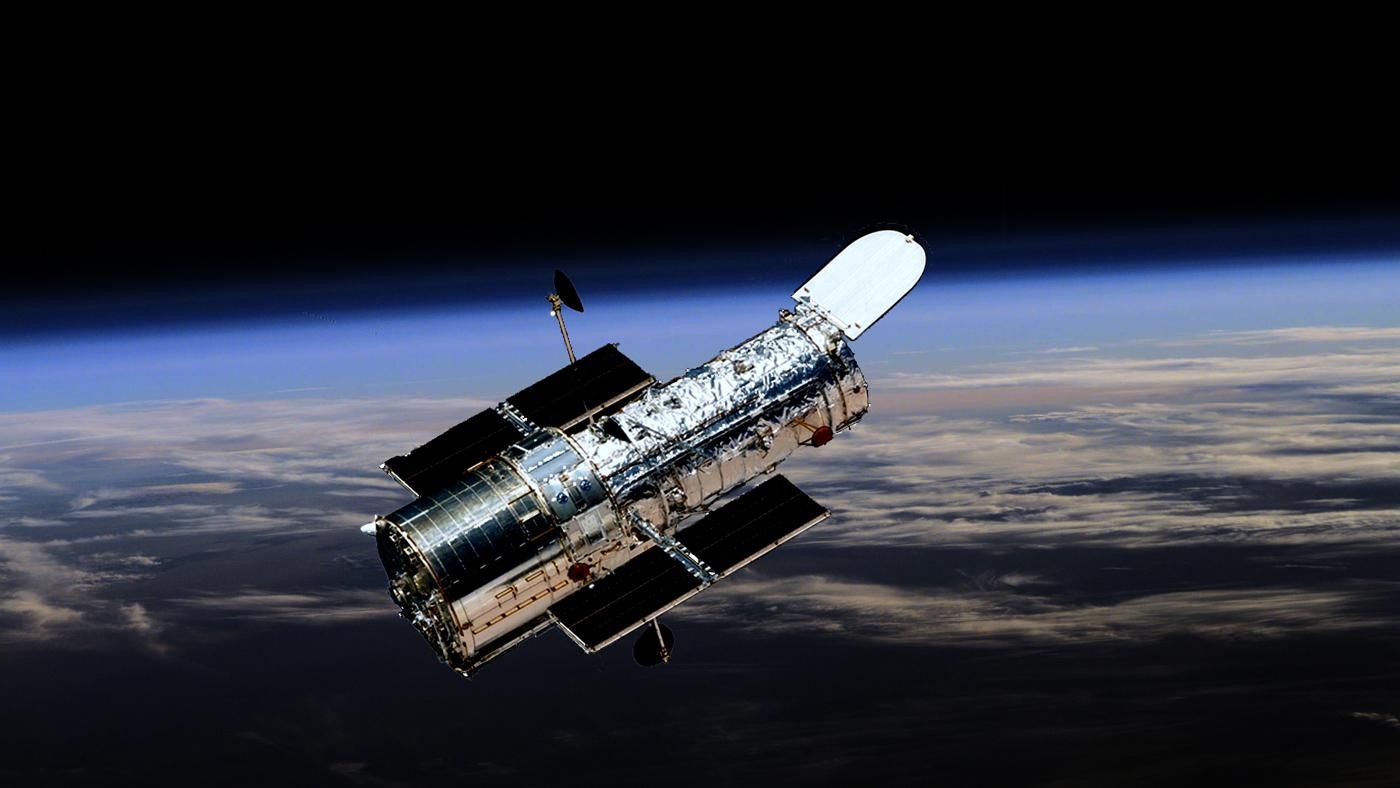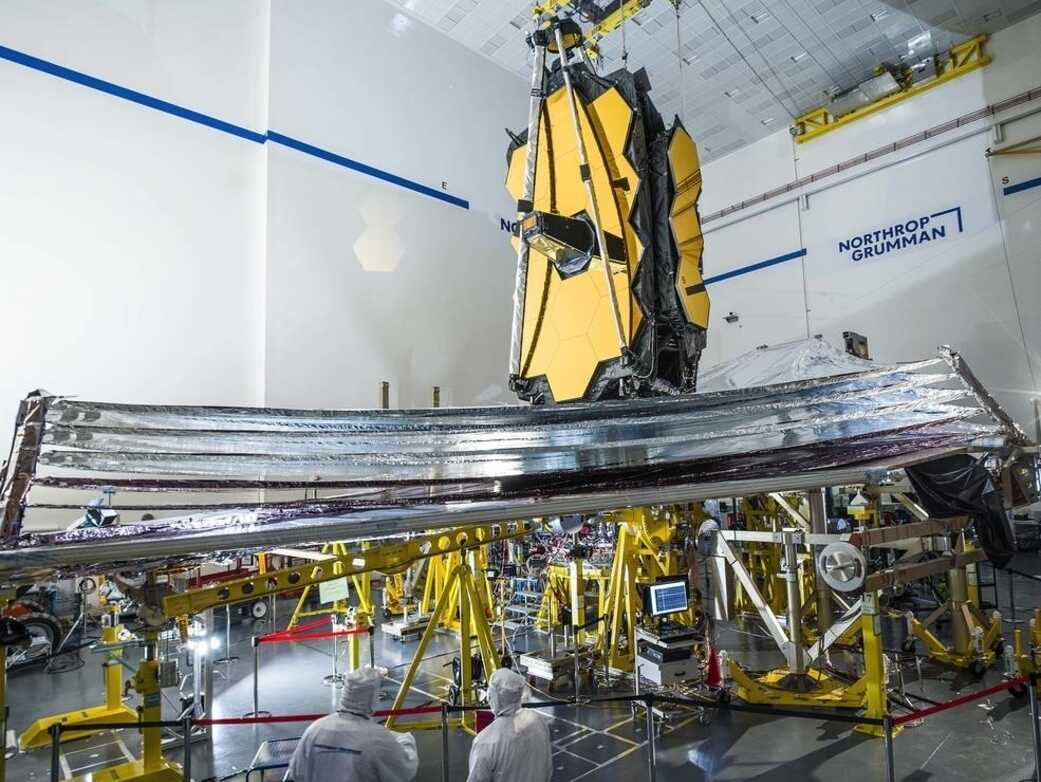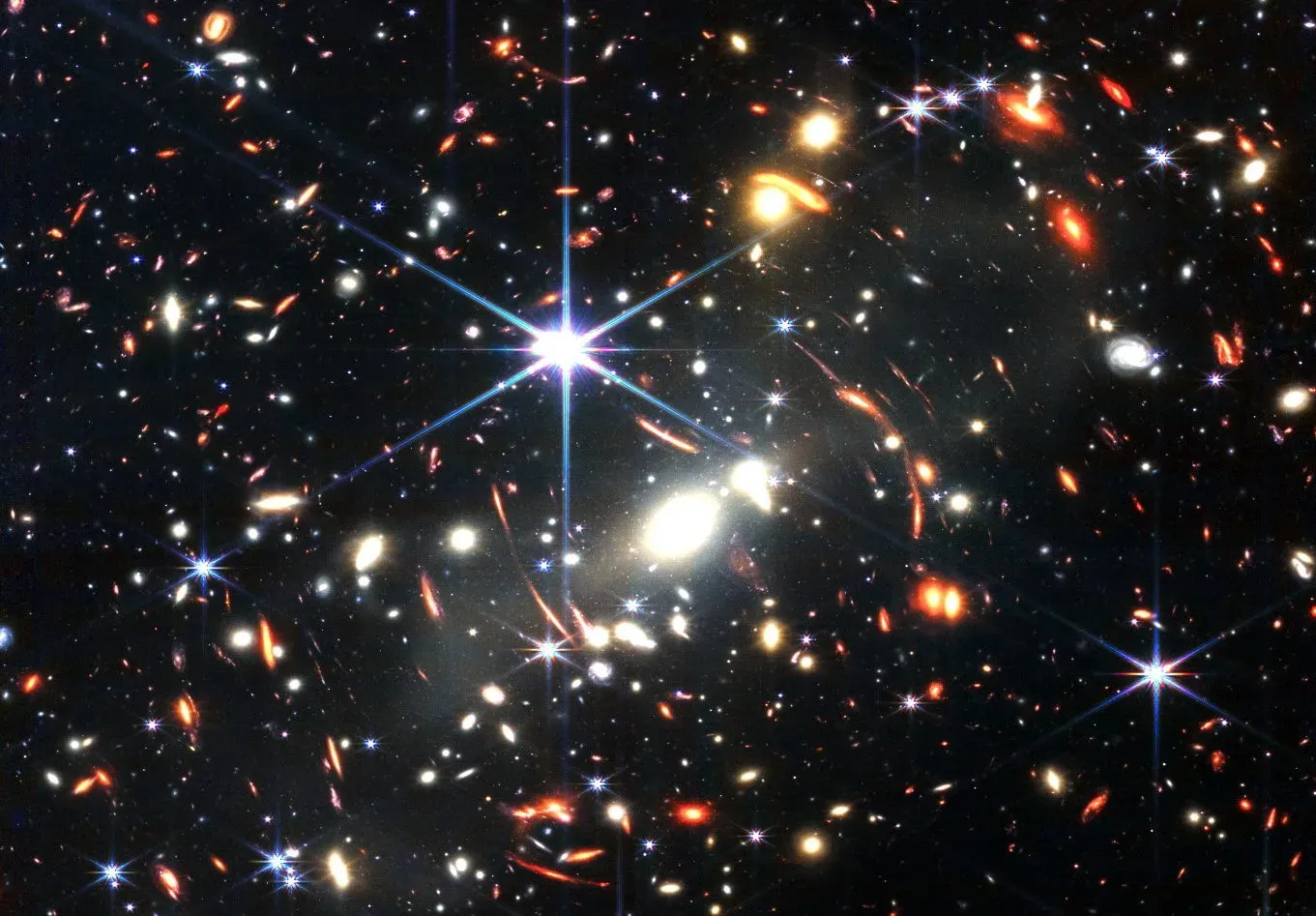How Will We Get A Better Look At The Universe With The James Webb Space Telescope?
If you're curious about the grand spectacle of the cosmos, my friend, the solution is quite straightforward: simply open your eyes and gaze above. Ah, but there's the eye rub, the quality of our celestial observations is so deeply intertwined with our advancements in telescopic technology. Like a fine-tuned magnifying glass, the more refined our "eyes", the clearer our vision of the universe. Exciting right?
Telescopes have had their fair share of evolution, growing ever so large, now boasting a size ranging between 8-10 meters, and the promise of even larger, 30-meter behemoths on the horizon. Our beloved tools of cosmic discovery have been enhanced, meticulously fine-tuned to make the most of each precious particle of light they capture, thanks to the application of different wavelength filters, sophisticated spectroscopy, and numerous other advanced methodologies.

Let's think about Earth for a moment. Our home planet does present a unique set of challenges, with our atmosphere causing quite a disturbance. That's where adaptive optics systems swoop in, heroically correcting atmospheric distortions and offering us an unblemished gaze at the heavens. And in certain situations, we have even managed to cross the atmospheric boundary, reaching out into space. It's thrilling, isn't it? Better eyes, a clearer view.
Our Earth-based observations, however, are hampered by the limitations imposed by atmospheric light transmission. We do well with optical light, but only meager amounts of ultraviolet and near-infrared spectra break through. X-ray or gamma-ray light? Practically non- existent from our vantage point. And don't get me started on the pitiful amounts of mid- infrared, far-infrared, and microwave light that reach us. However, things do get a tad brighter when we venture into the radio realm. So, what's the big draw of space? Simple: eliminate Earth's atmosphere and suddenly, you're privy to a spectrum of light wavelengths that are otherwise off-limits on terra firma (Earth).

Edwin Hubble, that hardworking fellow, provided us with an astonishing treasure trove of data. Not only in the realm of optical wavelengths, but also in the near-infrared. You may wonder why the Hubble Space Telescope looks like an industrial cylinder up close. That's to keep it cool and reflect as much light and heat as possible. Infrared light, you must know, is what we sense as heat, and anything that heats up enough emits light. If it gets sufficiently hot, it could even glow from red and orange, to yellow, or even white-to-blue. Even if you can't see Hubble glowing visibly, it still emits a considerable amount of infrared light. Despite all attempts to reflect away heat, Hubble can only observe up to about 2 microns in wavelength before it's all just thermal noise to the instruments.
So, as we continue to improve our tools, we gain ever deeper insight into the cosmos.

Ah, the James Webb Space Telescope (JWST) – now, that's a marvel that deserves our admiration. You see, this celestial machine stands out in several ways that have us stargazers quite excited.
Unlike other observatories floating in low-Earth orbit, the JWST has set up shop at the L2 Lagrange point, a comfy 1.5 million kilometers away from Earth. Why so far? Well, it allows the JWST to dodge the constant heat bath of Earth's infrared emissions. But the innovation doesn't stop there; Instead of relying on reflective material, the JWST sports a custom-crafted 5-layer sunshield. This high-tech parasol keeps the Sun at bay, effortlessly reducing the temperature to a chilly -233 degrees Celsius. Quite the difference from Hubble's - 73 degrees Celsius, wouldn't you say?
Then there's the matter of the telescope's mirror and instrument layout. Instead of focusing on ultraviolet, visible, and shallow near-infrared wavelengths like its predecessors (covering about 100-2000 nm or nano meters), the JWST has its sights set a bit differently. This stellar investigator is equipped to peer into a small portion of the visible spectrum, all of the near-infrared, and a substantial chunk of the far-infrared spectrum (ranging about 600-28000 nm). Furthermore, it boasts the capacity to conduct spectroscopy – the analysis of how matter interacts with light – across the entire near-infrared wavelength range (600-5000 nm).
These unique features make the JWST an awe-inspiring leap forward in our quest to explore the cosmos. Truly, a marvel of scientific progress.
Let's now turn our attention to MIRI – short for the Mid-InfraRed Instrument, a critical component of JWST's observing arsenal. You see, to explore those elusive mid-infrared wavelengths, we need to keep MIRI extra cool. So cool, in fact, that it's the only system aboard JWST that's actively chilled, reaching temperatures as low as -266 degrees Celsius. Quite the deep freeze, wouldn't you agree?
Armed with this chill advantage and its advanced observing capabilities, JWST can accomplish what even the mighty Hubble can't. It can see those galaxies that are so far away, so dim, and their light has been stretched by the ever-expanding Universe to such long wavelengths that they slip right past Hubble's gaze.
JWST's keen "eyes" and superior technology enable us to extend our vision further than ever before, to peer into the farthest, faintest corners of the cosmos. A fascinating prospect for anyone with a passion for unravelling the mysteries of the Universe!
What's really going to show the worth of the JWST, compared to those who've come before it, is when we start getting a good look. We're using it to peek into uncharted territories of the Universe, where no data has been collected before. Sure, we've got some ideas, some expectations about what we might find, but the Universe has a history of springing surprises on us.
Consider these burning questions: What were the first galaxies like? How big were they? How dazzling were the brightest among them? When did the first pristine stars, born of virgin star-making material, make their grand entrance? How rapidly did these galaxies grow, gobbling up their neighbors and accumulating mass?
All these mysteries and more, the JWST is poised to solve, marking several cosmic firsts.
In its first year, five major studies sought to unravel these enigmas by studying vast swathes of the extragalactic Universe in depth. Results from two of these studies, Panoramic and COSMOS- Web, are still under wraps. Two others, GLASS and CEERS, have unveiled numerous ultra-distant galaxies, even breaking Hubble's previous record holder, GN-z11, a galaxy whose light reached us from a time just 400 million years after the Big Bang.
JWST is not just another telescope; it's our new eyes to the unexplored Universe. The observations and discoveries made by JWST will redefine our understanding of the cosmos. How exciting is that?

Envision the night sky as a globe encircling us. It's mapped similarly to Earth, using degrees and finer units called arc minutes. A degree is like a slice of a 360-slice pizza. An arc minute? It's if we further divided that slice into 60 bite-size pieces.
The JWST Advanced Deep Extragalactic Survey, or JADES, is spending 770 hours observing a patch of sky spanning 125 square arc minutes. That's like studying 125 pizza bites in a celestial pizza of millions.
Tiny? Yes, but within this minuscule region lie two key areas: the Hubble Deep Field and the Hubble Ultra and eXtreme Deep Fields. These, though small, have made significant contributions to cosmic history.
These spatial pockets have offered up a handful of ultra-distant galaxy candidates previously pinpointed by Hubble. We're talking about 40 potential galaxies that emerged in the first 650 million years of cosmic history, including around four from the initial 500 million years. But here's the catch - these are just candidates.
We pick them out by scrutinizing their light, yet to confirm these potential galaxies as actual galaxies at the distances we predict, we have to perform spectroscopy. This process involves breaking down their light into all its various wavelengths and pinpointing where certain unique features emerge. It's only through the lens of spectroscopy that we can crown a galaxy candidate with the title of "confirmed galaxy".
So, in our quest to fully understand the cosmic panorama, spectroscopy is our critical tool, and JWST is our best instrument to use it to its full potential. The exciting possibilities of what we may confirm and discover are truly cosmic!
Alright, let's dig into the science that underpins all of this. When you photograph a galaxy using photometry, a technique that involves collecting light over certain wavelength ranges, you can gauge the distribution of that light. This gives you a clue about whether the galaxy is primarily packed with young stars, a blend of young and old stars, or mainly old stars. (While all types of galaxies are present in the more mature Universe, we generally expect early galaxies to be brimming with young stars.)
There's a critical cutoff point in the spectrum, a lower limit in the ultraviolet range where electrons move back to an atom's ground state. You wouldn't expect any light to reach you from below this wavelength, but above it? Oh yes, you'll find plenty of light.
This cutoff, known as the "Lyman break" in galaxy terms, marks the point where the transition to the n=1 state of hydrogen takes place (ring any bells from the Lyman series?). Now, as the Universe expands, this Lyman break wavelength stretches. This is a valuable clue for JWST - if it sees no light from short wavelengths but an abundance from longer ones, it's a strong hint that we've got an ultra-distant galaxy on our hands.
But to truly confirm it, we need to make sure:
- It's a genuine galaxy,
- It's not a nearer object that happens to be red or dusty,
- And it's indeed at the redshift/distance combo we predict.
To check all these boxes, we need to follow up with spectroscopy. Only then can we confidently say we've found a galaxy from the earliest epochs of the Universe. Spectroscopy is our verification tool, turning potential into confirmed reality!
Photometry is a relatively straightforward technique to apply; it allows us to analyze thousands of celestial objects simultaneously using the same sets of observations. Spectroscopy, however, requires more commitment. It calls for considerably lengthier observation periods for each object, necessary to gather enough light to determine the amount present at each different wavelength.
Yet the rewards of spectroscopy are significant. Instead of merely estimating vital properties of a galaxy, such as its distance, the degree of light stretching, and the intensity of its hydrogen, oxygen, and other elemental signatures, we can measure these factors directly.
That's what makes surveys like JADES, conducted with the JWST, so powerful and exciting. Instruments such as NIRCam allow us to examine large swaths of the sky, acquiring photometric estimates for a galaxy's characteristics in a fairly straightforward manner. We can then cherry- pick the most intriguing objects identified through photometry and conduct more in-depth spectroscopic follow-up observations, perhaps using the NIRSpec instrument.
We've got a fairly good grasp on the appearance of our Universe today, at a mature 13.8 billion years old. However, the secrets of those first few hundred million years - that initial 5% slice of our cosmic history - remain elusive. It's these mysteries that we hope JWST can help unravel, bringing the dawn of the Universe into clear view.
JADES recently revealed some phenomenal scientific findings at the 242nd American Astronomical Society meeting. Firstly, they identified a staggering 717 galaxy candidates from the first 5% of our cosmic history across their 125 square arc minutes of observed area. This marks a substantial leap from the 40-odd candidates Hubble had previously observed.
In fact, a considerable 93% of these 717 photometrically identified candidates were never before detected - neither by Hubble nor any other observatory. This demonstrates the unrivaled capabilities of the JWST observatory.
But the revelations didn't stop there. Spectroscopic follow-ups were carried out on 42 of these galaxy candidates. The resulting spectra confirmed that an astounding 41 of the 42 were indeed located at, or very close to, the redshift/distance combination suggested by photometry.
Furthermore, it was discovered that the one remaining unconfirmed candidate actually consisted of two overlapped objects: one closer and one considerably more distant. After subtracting the light from the nearer object (which was "merely" about 11 billion light-years away), it was found that the more distant one fell perfectly in line with the photometric data as well. So, all 42 collected spectra confirmed the existence of ultra-distant galaxies. It's tough to surpass such an achievement.
The story doesn't stop here. The most distant galaxy confirmed spectroscopically, known as JADES-GS-z13-0, sends us light from only 320 million years post the commencement of the hot Big Bang. In the JADES field-of-view alone, 17 additional galaxy candidates exist whose photometrically-inferred distances surpass the current cosmic record holder, and they are all yet to have their spectra taken.
And there's more. COSMOS-Web, with about half of its data still to be captured as of June 2023, is set to survey a far larger area of the sky than JADES ever could. Thanks to JWST's unparalleled size and resolving power, we can extract an abundance of information about the Universe from these galaxies.
These galaxies aren't mere "points" or "smudges" to JWST as they were to Hubble; they exhibit significant star-formation bursts within them. During these bursts, the emergence of hot, massive stars contributes substantially to cosmic reionization, a process where neutral atoms in the intergalactic medium are reionized by ultraviolet photons. Furthermore, these galaxies display strong emission lines.
What's also remarkable is the wide variety in their sizes. They range from a few hundred to tens of thousands of light-years wide, suggesting that many objects in our Universe matured rapidly - possibly more quickly than some astronomers had predicted.
We've made significant strides in understanding how our Universe grew up, creating a narrative that promises to inspire many more years of intensive research to fully assemble the cosmic puzzle. Here are some key insights:
The birth of the very first stars predates what JWST can observe. They likely formed within just 100-200 million years after the Big Bang.
The earliest galaxies we can see were likely the brightest and most massive of their era. They emerged in large numbers around 500 million years post-Big Bang, with a substantial number also appearing even 300-400 million years after the event.
We've found numerous galaxy candidates dating back to when the Universe was just 250-300 million years old. There's a high probability that many of these will eventually be confirmed as actual galaxies.
The technique of measuring photometric redshifts has proven remarkably successful for the galaxies it's been applied to so far. However, whether this method will hold up for the most distant galaxy candidates is yet to be determined.
All this valuable knowledge we're gaining from JWST is less than a year old. As the telescope continues to send back more data, and as various research teams using different observational methods publish their findings, we'll become even more adept at using JWST. When one group learns something new, the entire scientific community benefits. With JWST's expected lifespan extending well into the 2040s, we can look forward to decades of new scientific breakthroughs, exciting discoveries, and a deeper understanding of how the Universe matured to its current state. The future is indeed bright.
